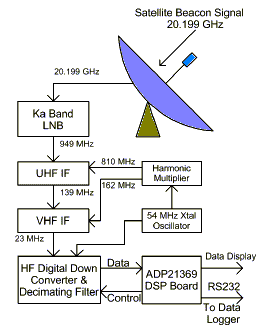History
The first artificial satellite, Sputnik-1, was launched into orbit in 1957 with carrying a radio beacon transmitting of 20,005 MHz. This was the first instance of telemetry (measurement from afar) from space.
Satellite beacons have been used for many purposes,
1. tracking and telemetry
2. propaganda advertisement to ground navigation and monitoring.
Satellite beacons today generally transmit on higher frequencies and are controlled by digital logic circuitry.
Type of Beacons
Satellite beacons can be classified according to their function or the frequency they are.
(reference: https://www.spaceacademy.net.au/spacelink/satbcns/satbcns.htm)
| Beacon Function | Band | Notes |
| Early Russian tracking and telemetry | HF | eg 20.005 MHz |
| Early USA tracking and telemetry | VHF | eg 108 / 136 MHz |
| Geosat tracking and telemetry | Ku / Ka bands | eg 14/26 GHz |
| Deep Space tracking and telemetry | S / X bands | eg 2 / 8 GHz |
| Ionospheric studies | VHF / UHF | GPS now commonly used |
| Tropospheric studies (rain attenuation) | Ku / Ka bands | 14 / 26 GHz |
| Navigation | L - band | eg GNSS / GPS |
| Optical | Visible light | Mostly experimental |
Ka-band beacon receiver example

'Satellite Communication > Antenna' 카테고리의 다른 글
| Low-profile Antennas (LPAs) (0) | 2019.09.19 |
|---|---|
| IMU (0) | 2018.11.13 |
| RSSI and Kalman Filter (0) | 2018.11.08 |
| Bandpass Filter (BPF) (0) | 2018.11.08 |
| FFT (Fast Fourier Transform) (0) | 2018.11.08 |